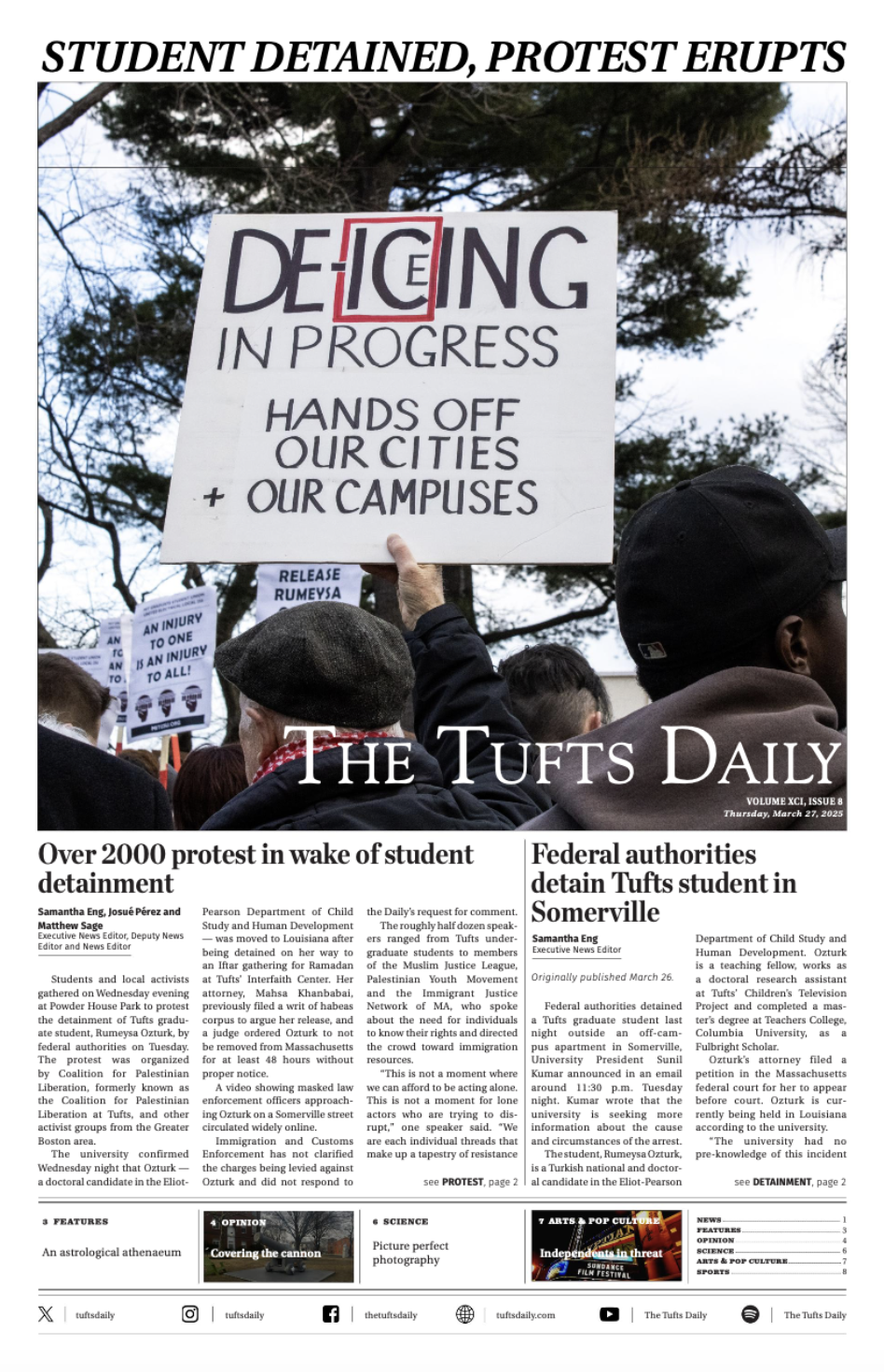In a meeting about Indigenous Peoples’ Day a couple of weeks ago, I introduced myself, saying, “Hi, my name is Sorsha Khitikian, and I am Yurok, which is located in modern-day California.” After the meeting, I was approached by one of my Indigenous peers, who told me that my use of the word “modern” was problematic. As they explained, the word implies that my Indigenous culture is stuck in the past, contributing to the problem of cultural erasure. My culture is modern, and I can make sure it isn’t forgotten through my word choices as an Indigenous voice. You know what? They’re exactly right.
Indigenous people, including myself, have to repeatedly define themselves in the face of a country that doesn’t see or interact with them. The surviving Indigenous population in America is somewhere between three to nine million, with many of us living on secluded reservations rather than urban cities. As an Indigenous person who grew up in a city, I’ve been told by dozens of people that I am the first Indigenous person they have met. Native people are also rarely on the big screen. If non-Native people never meet or see Indigenous people, what is stopping them from reacting, intentionally or not, to our perspectives in a way that contributes to Indigenous erasure?
It’s no surprise that non-Natives fail to comprehend Indigenous perspectives when examining what happens when non-Natives are forced to interact with these perspectives. An Indigenous owned company, Urban Native, became popular in 2018 for selling hats that said “You Are On Native Land.” Some non-Indigenous people commented online that they feel uncomfortable buying such hats, instead wanting hats that said “we” are on Native land to include the non-Native voice. The discomfort non-Native people felt from the hat’s statement comes directly from the fact that they are used to being the central concern of every conversation, even those about Indigenous people. The hat serves one objective– showcasing Indigenous perspectives, which is done with the “you” word choice. Non-Natives responded by immediately thinking of their own perspective as more important. Even if some of the comments came from not wanting to be disrespectful to Indigenous people, asking to have one’s non-Native perspective included by a brand whose core purpose is “increas[ing] Indigenous visibility in their communities and around the world,” remains problematic. These non-Native commenters are prioritizing their own comfort over Indigenous perspectives, even in the context of an Indigenous-owned brand. This constitutes erasure, no matter the intention behind it.
Non-Natives should embrace the uncomfortable feeling that comes with decentering themselves. Every non-Native person in America today benefits from our present day (not just historical) displacement by living on stolen land, and they should take emotional accountability for that. They shouldn't minimize their discomfort to make themselves feel better.
Tufts University contributes to this problem of Indigenous erasure by tokenizing our existence to increase their diversity profile. For the class of 2027, the student profile data displayed the actual number of enrolled Indigenous students (40), instead of the percentage out of the total enrolled students, like all other racial categories measured. Tufts made the number appear larger to make themselves look more diverse. So, how can Tufts hold itself accountable?
The easiest way for an institution like Tufts to take some accountability is to craft a land acknowledgement, which recognizes the Indigenous people that were originally on that institution’s land, as well as their subsequent erasure. These acknowledgements should be written by non-Native people in order to force them to grapple with their perspectives. Moreover, land acknowledgements act as a first step towards proactive advocacy, allowing for continued concrete support of Indigenous people.
Tufts has not taken this accountability. While various departments have created their own land acknowledgements, these efforts have not been university-wide. The Tufts University website itself has no land acknowledgement anywhere I could find, except a brief one-paragraph statement on the admissions website that is only found at the top of a “History of Tufts University” page, perpetuating the narrative of Indigenous people as a relic of the past. The good news is that some departments are taking steps beyond land acknowledgements. The Theater Dance and Performance Studies department did so this past week by bringing Indigenous artist Carly Harvey to campus. Unfortunately, actions on an institutional level have largely been taken only after Indigenous student activism.
As we come together to celebrate Indigenous Peoples’ Day, we should remind Tufts that there is institutional work to be done. Tufts needs to proactively commit to the Indigenous community, just as it does to the abstract idea of diversity and inclusion. Instead of tokenizing Indigenous students, it should revel in the discomfort that exists when prioritizing a different perspective. I’m excited to see the amazing things Tufts can accomplish when it does.





